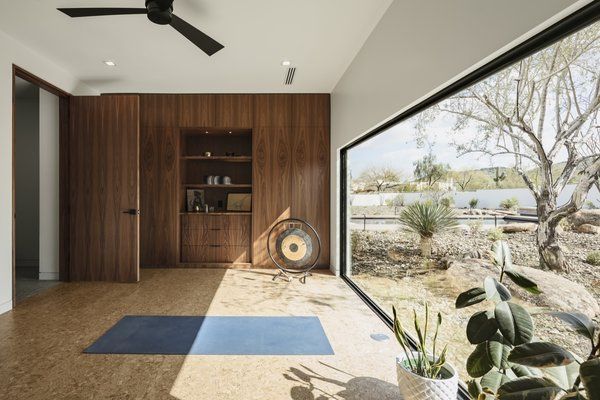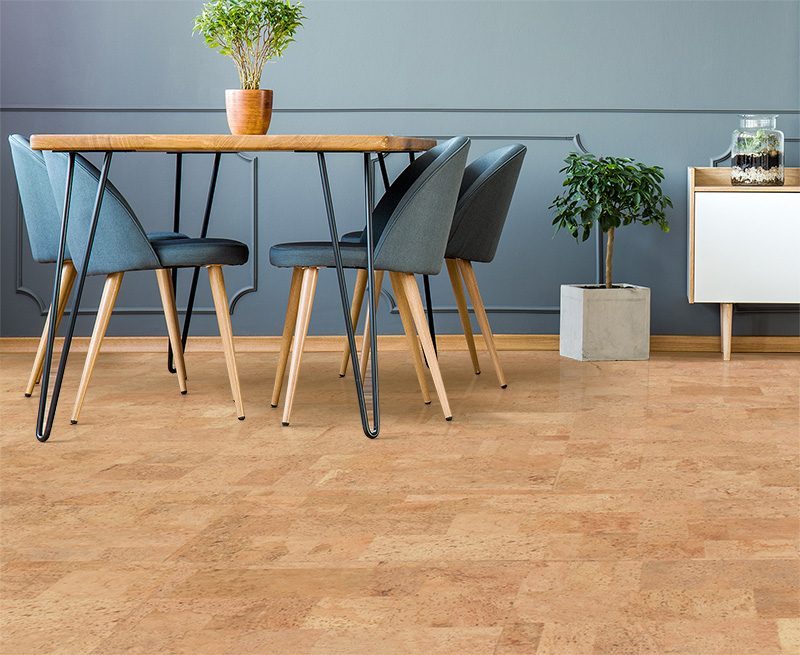Cork flooring is a sustainable and eco-friendly flooring option that has gained popularity in recent years. Made from the bark of the cork oak tree, it is a natural and renewable resource that can be harvested without causing harm to the environment.
In this article, we'll discuss what cork flooring is, the benefits it offers, and the costs and maintenance associated with it.
What is Cork Flooring?
Cork flooring is made from the bark of the cork oak tree (Quercus suber), which is harvested from living trees in commercial plantations. The cork is ground up, compressed, and formed into sheets that are bonded with resins to create flooring products.
The resulting cork flooring is biodegradable and will break down into the environment at the end of its life cycle.
Why is it popular? In short, because it's unique, environmentally friendly and creates a "wow" factor in your home.
Benefits of Cork Flooring
- Sustainability: As a natural and renewable resource, cork flooring is a sustainable option that can be used without the guilt associated with using hardwoods from old-growth forests or tropical rainforests.
- Insulation: Cork is a natural insulator, which means it can help to reduce sound transmission and keep a room warm in the winter and cool in the summer.
- Comfort: Cork flooring is soft and warm to the touch, making it comfortable to walk on.
- Style: Cork truly stands out versus almost all other flooring styles, allowing you to create a unique and stunning space.

Disadvantages of Cork Flooring
There are a few disadvantages to consider when it comes to cork flooring:
- Durability: While cork flooring is relatively durable and can withstand heavy foot traffic, it is not as durable as some other flooring materials such as ceramic tile or hardwood.
- Moisture: Cork flooring is susceptible to water damage and can be easily damaged by spills and high humidity. It is not recommended for use in bathrooms or other areas with high moisture levels.
- Color: Cork flooring can fade or change color over time if exposed to direct sunlight. This can be prevented by using curtains or blinds to block sunlight, but it requires constant vigilance and care.
- Installation: While cork flooring is relatively easy to install, it is not recommended for DIY projects as it requires precise cuts and measurements to ensure a smooth and even surface.
- Maintenance: Spills must be wiped up immediately to prevent staining, and the finish must be reapplied periodically. Cork flooring is also prone to scratches, especially from pet's nails, so it may not be a good option for households with pets.
Cost of Cork Flooring
The cost of cork flooring varies depending on factors such as the thickness of the material, the quality of the cork, and the quality of the finish. On average, the cost for cork flooring planks or tiles can range from $4 to $10 per square foot. On average, this is about 40-60% more expensive that most floating floors like LVP or laminate, and about the same price as most hardwood floors.
This cost is comparable to that of bamboo flooring and slightly less than most hardwood flooring. However, professional installation can add an additional cost of around $2 - 4 per square foot. Keep in mind that cork flooring is a relatively easy DIY project, which allows many homeowners to save on professional installation costs.
In conclusion, we recommend cork as a stylish option for modern homes and for maintaining a sustainable living space.

